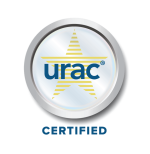Health systems have begun to adapt and embrace Remote Patient Monitoring (RPM). Numerous systems and platforms have been affected by this adaptation, and one of the most affected industries is the healthcare industry, particularly health insurance. Insurance providers are supporting this rising health industry with reimbursement incentives due to its current necessity and demand.
The global Remote Patient Monitoring market is expected to reach US $188,952.22 million by 2028, from US $29,062.30 million in 2021.[1] The market is estimated to grow at a CAGR of 30.7% from 2021 to 2028. The rising and growing need for RPM usage will increase dramatically and become the most useful tool for health systems and hospitals as well as health insurance companies. Let us take a look at the six reasons why remote patient monitoring is best for the health insurance industry.
Drive down the cost of utilization
Remote Patient Monitoring has been shown to reduce hospitalizations, readmissions, and lengths of hospital stay, according to data[2] published in JAMA Network Open. Hospital readmissions cost the U.S. healthcare system upwards of $17.4 billion[3] per year. It has been estimated that around 27% of those readmissions are avoidable[4]. RPM allows healthcare providers to leverage technology to monitor their most at-risk patients and help identify health concerns before they land patients back in the hospital — as readmission or often before they are admitted for their condition in the first place.
Remote Patient Monitoring (RPM) is a cost-cutting tool used by US healthcare systems, health insurance companies, and hospitals. In order to lessen utilization in the hospitals in populated situations, is to deliver care, improve outcomes, and engage with patients at home. RPM is used to extend and move more care out of the traditional settings like clinics and hospitals. This type of care for patients extends the reach of doctors or physicians, enables continuous engagement between patients and caregivers, and offers providers a constant stream of real-time health data. Medicare reimburses RPM services the same as in-person or face-to-face clinical services with no additional requirements regarding the use or originating site of care. Moreover, RPM systems hold huge potential for generating savings by preventing more severe and costly health deterioration.
Get ahead of the competition
The use of Remote Patient Monitoring is on the rise in today’s time. The global RPM market is expected to reach US$ 188,952.22 million by 2028 from US$ 29,062.30 million in 2021. The market is estimated to grow at a CAGR of 30.7% from 2021 to 2028. The global remote patient monitoring market is projected to reach USD 117.1 billion by 2025 from USD 23.2 billion in 2020, at a CAGR of 38.2% between 2020 and 2025.[5] The rising aging population and the growing need to expand healthcare access, the cost benefits of telehealth, and remote patient monitoring. The remarkable benefits of RPM to reduce the burden on medical resources, advancements in telecommunications, growing incidences of chronic diseases, and increasing investments in telehealth and RPM are the major factors driving the growth of this market and thus, will provide benefits to many health insurance plans.
High return on investment
In the next 12 years, the Association of American Medical Colleges (AAMC) projects that the U.S. will see a primary care provider shortage of as many as 55,000 practitioners. [6] At the same time, the U.S. is expecting a 10% population growth rate, with the number of people over the age of 65 increasing by 45%. Adopting a remote health monitoring system facilitates a high return on investment (ROI) for patients, healthcare providers, and insurance providers.
In terms of operational ROI, healthcare provider earns approximately $250,000 from RPM claims alone. So, if you wish, you can enter your practice figures and calculate to find out the amount of reimbursement. When it comes to clinical ROI with the RPM system, healthcare providers have access to everything that they require to maximize the treatment and services they provide. Examples are: fast identification of recent trends and outliers, patient engagement enhancement, access to effective data analysis and monitoring, minimization of disease complications, and offering previous and further data-driven diagnoses and treatments. When it comes to financial ROI, healthcare providers are reducing medical costs and enhancing their level of care, which in turn helps in financial savings. The abundant cost savings of RPM usually comes because of the following reasons hospital re-admissions, Reasonable Care Act penalties, and a lot more. Through this, the patients experience a high return on investment and to the health insurance as well. The cost is reduced by RPM, thereby preventing the commencement of more grave and expensive healthcare outcomes.
Technological advancement
The rising demand for health monitoring in remote areas has driven the development of further technological advancements. Most tech giants are already forming partnerships with Artificial Intelligence (AI) developers to make and apply innovative RPM solutions. Examples of such improvements include predictive monitoring, faster algorithms, and advances in Machine Learning (ML. The more insurance providers show their support for RPM through reimbursement programs, the more incentive there is for tech giants, healthcare professionals, innovators, and more to continue investing their own time and money into improving the technology itself.
There has been a rise in the demand for RPM equipment and this will lead to the development of technological advancement. Innovative RPM solutions are performed and executed everywhere, and their improvements include predictive monitoring, faster algorithms, and advancement in machine learning. Currently, the insurance providers are showing their interest via reimbursement programs, and in this way, they are investing their own time and money to improve the technology.
Personalized treatment plan
Many healthcare systems and insurance companies choose to invest in different forms of telehealth technology like RPM. The advancement in these technologies has resolved many issues faced by the health industry, thus allowing the providers to give the best care to the patients at a significantly low budget. The insurance companies are catching up with the reality that RPM is the new normal, which is why they are more likely to invest in it. Common issues that are faced by the healthcare industry today are answered in a quick span of time, thereby allowing healthcare providers to deliver high-quality care to the patients.
Telehealth and RPM is new standard in the healthcare industry and are offering immense benefits to the patients as well as the providers. With RPM and Telehealth solutions, the investors can personalize the treatment plan as per the needs of the patients. The doctors or clinicians can provide modified incentives and treatment experience on the basis of an individual’s interest and convenience level. Other than that, RPM solutions can be based on every patient’s recent health condition, collected, and risk profile. It will help the patients to get treatment in a proper way rather than an all-around approach to treatment.
Improved management and monitoring
A survey[7] revealed that, “At least 83% of consumers agree that telehealth can replace some or all of their in-person appointments and are open to interacting with their healthcare provider virtually.” Data collection of patients is not the only objective of an RPM program. Educating the patient is another major component. Generated health data can give patients the information they need to help improve their behavior or lifestyle to create healthier outcomes. As part of an RPM program, healthcare providers can use smartphones or tablets to send patients education guides specific to their needs, along with daily tips on types of foods to eat and why it’s important to exercise and give importance to a healthy lifestyle. It will also help the patient to be more knowledgeable and take charge of their health, thus improving management and monitoring with the healthcare providers. The benefits of remote patient monitoring for clinicians include ease of access to patient data, the ability to better manage chronic conditions, lower costs, and increased efficiencies that will also lead to benefits for health insurance.
Reducing the number of doctor’s office visits for patients with chronic diseases expands clinicians’ capacity for office visits that need more of their dedicated time and attention. Remote patient monitoring can be done anytime, anywhere, so clinicians can multi-task when needed. They can keep an eye on their most at-risk patients while monitoring and educating patients with chronic conditions from a distance.
For health plans hoping to drive down the cost of utilization, get ahead with competitors, gain high return on investments, technological advancement, personalized treatment plans, and improve management and monitoring, contact DrKumo to know more information about the next-generation Remote Patient Monitoring (RPM).
References:
- Remote Patient Monitoring Market by Product End User – Global Forecast to 2025. (n.d.). Www.reportlinker.com. Retrieved December 9, 2021, from https://www.reportlinker.com/p05982888/Remote-Patient-Monitoring-Market-by-Product-End-User-Global-Forecast-to.html?utm_source=GNW
- Jeong, I. C., Healy, R., Bao, B., Xie, W., Madeira, T., Sussman, M., Whitman, G., Schrack, J., Zahradka, N., Hoyer, E., Brown, C., & Searson, P. C. (2020). Assessment of Patient Ambulation Profiles to Predict Hospital Readmission, Discharge Location, and Length of Stay in a Cardiac Surgery Progressive Care Unit. JAMA Network Open, 3(3), e201074. https://doi.org/10.1001/jamanetworkopen.2020.1074
- Ahmad, F. S., Metlay, J. P., Barg, F. K., Henderson, R. R., & Werner, R. M. (2012). Identifying Hospital Organizational Strategies to Reduce Readmissions. American Journal of Medical Quality, 28(4), 278–285. https://doi.org/10.1177/1062860612464999
- Walraven, C., Bennett, C., Jennings, A., Austin, P. C., & Forster, A. J. (2011). Proportion of hospital readmissions deemed avoidable: a systematic review. Canadian Medical Association Journal, 183(7), E391–E402. https://doi.org/10.1503/cmaj.101860
- Remote Patient Monitoring Market by Product End User – Global Forecast to 2025. (n.d.). https://www.reportlinker.com/p05982888/Remote-Patient-Monitoring-Market-by-Product-End-User-Global-Forecast-to.html?utm_source=GNW
- Heiser, S. (2019, April 23). New Findings Confirm Predictions on Physician Shortage. AAMC. https://www.aamc.org/news-insights/press-releases/new-findings-confirm-predictions-physician-shortage
- Healthgrades Study Finds Patient Confidence is at Highest Levels Since March. (2020, July 1). https://www.businesswire.com/news/home/20200701005585/en/Healthgrades-Study-Finds-Patient-Confidence-is-at-Highest-Levels-Since-March









